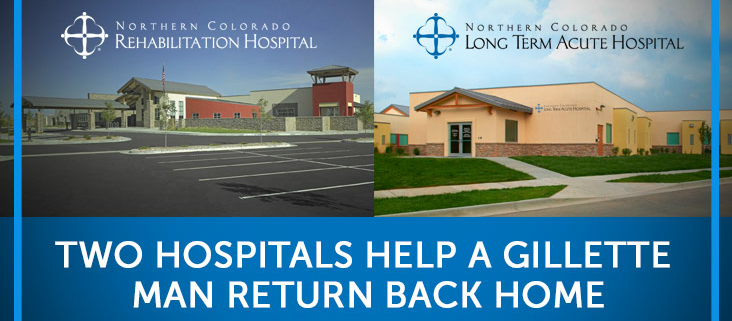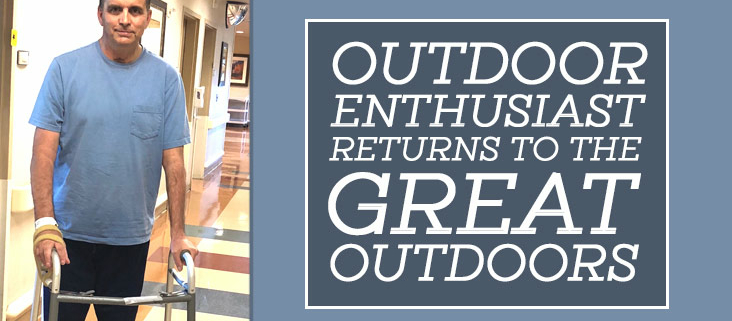When Christopher Lauck of Gillette, Wyo., mixed CLR (Calcium, Lime, Rust remover) with bleach this past summer, the result was life-threatening. The 32-year-old coal mine equipment operator went into respiratory failure after breathing in the fumes.
Respiratory failure occurs when there isn’t enough oxygen passing from the lungs into the body’s bloodstream, which creates the potential to critically harm the body’s organs like the heart and brain. In Lauck’s case, he was rushed to a local hospital and put on a mechanical ventilator to help him breathe. After about a month at the hospital, he was transferred to Northern Colorado Long Term Acute Hospital for continued care. He was still on a ventilator.
“While the ventilator plays a critical, life-saving role, it was important to get Christopher removed from it as quickly and safely as possible to avoid complications,” says Dr. Gary Pearson, Medical Director of Northern Colorado Long Term Acute Hospital. “He had received prolonged mechanical ventilation, which requires specialized medical assistance in being weaned off of it.”
At the hospital, an interdisciplinary respiratory failure team created a personalized plan of care with Lauck and his family members that was tailored to his complex, medical needs. The team used proven clinical practices, evidence-based research, and the latest technology to help remove Lauck from the ventilator within two weeks.
“The physicians and medical team were very thorough and provided excellent care,” Lauck says. “I felt good about the treatments and felt at home.”
Soon after Lauck was removed from the ventilator, he was transferred to Northern Colorado Rehabilitation Hospital. He began participating in physical, occupational, and speech therapy. He relearned how to perform daily activities such as walking, eating, dressing – and his favorite, competitive shooting.
“My therapists found out I enjoyed competitive shooting, so during therapy, I began using a laser to shoot at targets,” Lauck says. “It was a really positive experience and helped me to see that I was going to be able to return back to doing the things I enjoyed.”
Lauck returned home at the beginning of September. He has since returned back to work, competitive shooting, and spending time with his friends.



